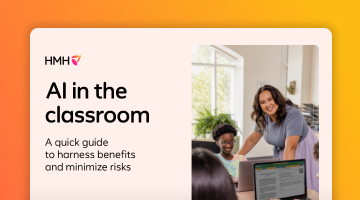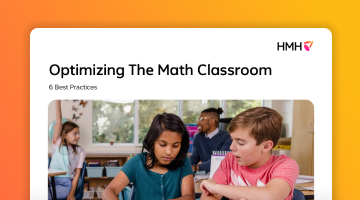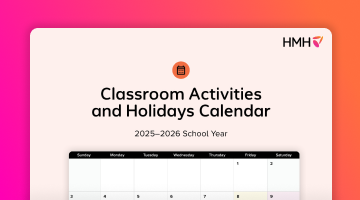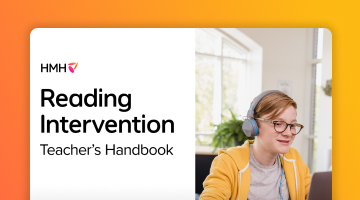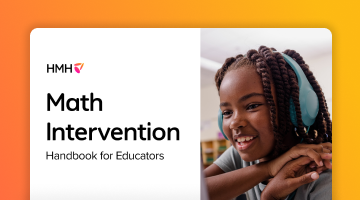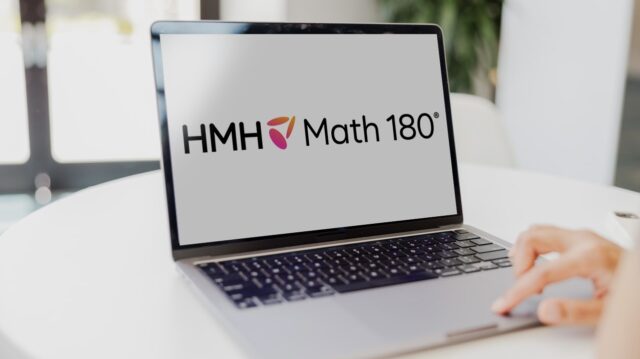
There are three types of instructional assessment. Diagnostic assessment determines baseline knowledge and skills for appropriate placement within an academic program. Summative assessment provides information about which learning goals students have achieved at the end of each unit of study. In between these measures, dynamic, ongoing formative assessment monitors student progress.
Diagnostic and summative assessments are measures of what students have already learned. In contrast, formative assessment is an assessment of learning and allows educators to monitor student progress throughout the year and with potentially fewer problems along the way.
What Is Formative Assessment?
According to the Council of Chief State School Officers (CCSSO), formative assessment is used during instruction to elicit evidence of learning to improve student understanding. Implementing digital tools in the classroom for formative assessment can be beneficial for both teachers and students. Dynamic formative assessment allows teachers to use real-time data to guide their instruction and get students back on track.
Formative assessment processes are effective if they have the following four characteristics:
- Clear learning goals: Students should understand what they’re working on. They must be able to explain what targeted understanding, performance, or skill they’re working toward, how they’ll know when they’ve reached that target, and how to gauge their progress along the way.
- High-quality, goal-aligned learning tasks at appropriate levels of challenge: Formative assessment learning tasks should be differentiated by content and process according to student responses and readiness levels. These tasks should also provide information about student understanding and skills. Types of engaging learning tasks include, but aren’t limited to, problem-solving challenges, writing projects, and quiz items.
- Timely, substantive feedback: In-the-moment feedback that’s also helpful and positive allows students to evaluate their own learning needs. Students can become self-managing learners, figure out whether they’re on the right track, and plan their next steps accordingly.
- Responsive adjustment of instruction and student practice: Ongoing formative assessment allows teachers to guide their instruction according to the evidence they receive. Students also use it to support their learning and understand what they need to do next to improve their outcomes.
Digital Tools for Formative Assessment
Formative assessment technology features the four key elements mentioned above that help improve teacher instruction and student learning. Digital tools are well-suited for dynamic formative assessment. Students’ interactions with online learning tasks through digital tools can be captured, stored, and analyzed for learning behavior patterns and needs. Also, the real-time nature of data capture and reporting with digital tools offers teachers timely updates.
Plus, digital tools can save teachers time since they don’t have to grade assignments or quizzes manually. Learning goals and content can be customized to each child, and digital tools can make real-time adjustments in students’ learning paths by analyzing student activity and responding to it with more or less challenging tasks—depending on where the student is.
HMH offers Waggle, a digital tool designed for effective formative assessment. The tool provides students a safe, positive environment with scaffolded instruction, in-the-moment feedback, and personalized learning pathways to practice. Even if you don’t use Waggle personally, its features can serve to illustrate the benefits of using digital tools for formative assessment:
1. Students understand what goals they’re working on and take charge of their own learning through their individual dashboards. Students can choose from their assigned goals and educational games and decide what to work on next. Therefore, learning goals are clear.

2. Students are presented with a variety of item types to ensure they’re engaged in different ways and can find various entry points into the subject. In particular, Waggle aligns learning tasks to learning goals at appropriate levels of challenge, including those that require typing in text, graphing, and open response.
3. Technology, such as Waggle, that offers specific, timely, and substantive feedback helps students approach the problem differently—instead of revealing the answer. If they want, students can tackle problems again. Also, students can track their progress on their dashboards and get hints and explanations until they understand the skill.
4. Teachers see every student’s progress in real-time, which allows for responsive adjustment of instruction and student practice. Based on student progress, specific lessons and assignments are recommended. Teachers can also search for instructional, practice, and assessment content.
Both teachers and students can benefit from the advantages of formative assessment using technology. As classrooms become increasingly digital, this opens the door for more consistent and higher quality formative feedback to shape student learning and teacher instruction. Learn more about formative assessment using technology in the white paper, “Strategies for Dynamic Formative Assessment with Digital Tools.”

***
Learn more about how Waggle, the award-winning personalized learning program, addresses formative assessment for all students in Grades K–8.
The information in this blog post originated from a white paper by Marcella L. Bullmaster-Day, EdD.
Discover best practices for integrating AI in the classroom.

